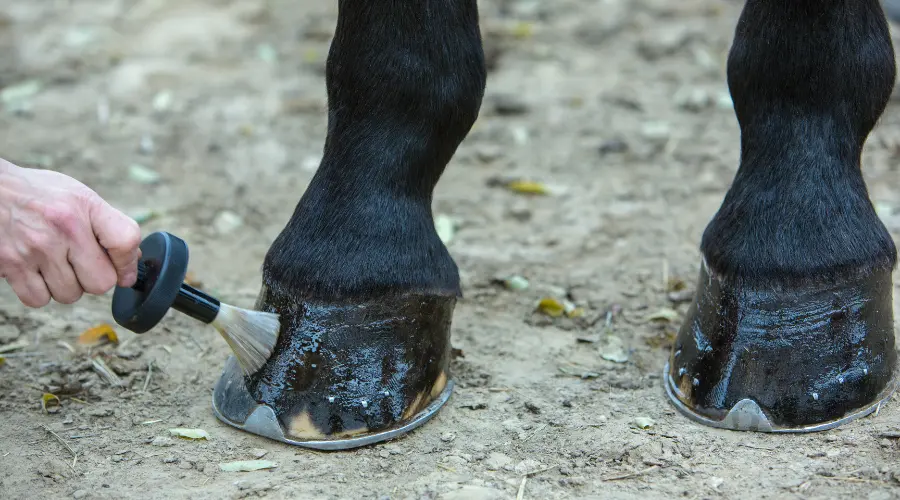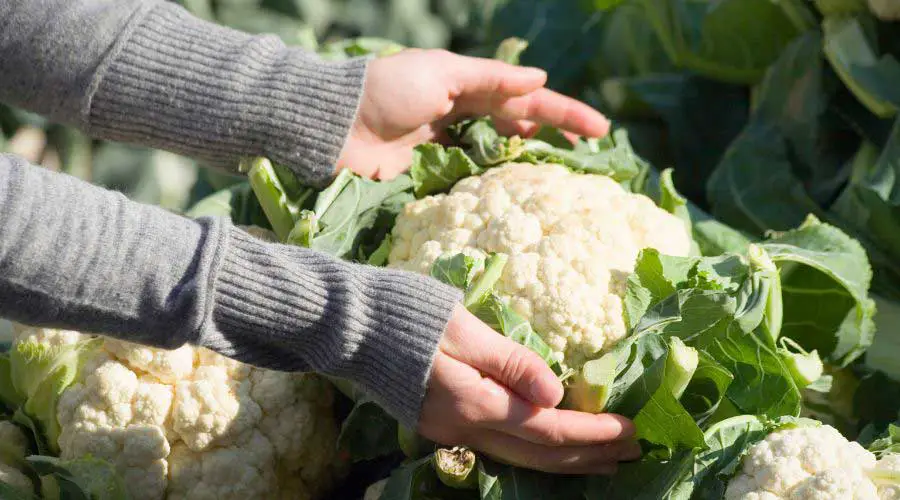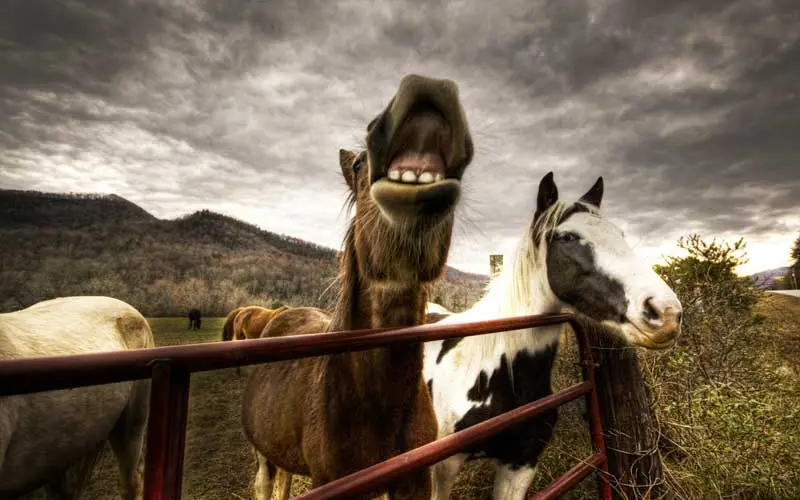Are horse hooves like nails, and do they grow continuously? The answer is yes! There is a similarity between your fingernails and your horse’s hooves. Both of them grow continuously and they require regular trimming to keep them short.
A horse owner should get a farrier to trim the hooves of domesticated horses to prevent overgrowth and injuries. Trimming a horse’s hoof is crucial for overall hoof health. Proper hoof care prevents sole bruises, fungal infections, and hoof abscesses.
A wild horse doesn’t require hoof trimming because wild horses spend most of their time walking on rough terrains, and their hooves wear out naturally.
Let’s learn some quick facts about the similarities between horse hooves and human nails.
Understanding horse hoof anatomy
Have you ever wondered what a horse hoof looks like?
Well, if you have done horse care before, you might be familiar with the anatomy of the horse hoof. If not, I will take you through a basic overview of the horse hoof anatomy for a deeper understanding.
Let’s get started!
A horse hoof has a complex structure, and you can’t tell this by simply looking at the hoof. Different parts make up the hoof, and they all work together to ensure the hoof is healthy and functioning well. I will give you a breakdown of the hoof into three major areas to help you understand its anatomy. These areas include:
- Outside
- Underside
- Inside
Let’s dig into each area a little deeper!
See also: Find out how horses have managed to survive without the need for regular hoof trimming.

Outer area
The outer area of the horse hoof is the most visible part. This outer structure has different parts, which I will discuss below.
Hoof wall
This is the main part of the hoof you see at a glance. The hoof wall is hard, and it protects the sensitive inner structures.
And it doesn’t stop there!
It supports the horse’s weight and absorbs shock when the horse is moving. The hoof wall doesn’t have nerve endings or blood vessels. It grows continuously about 3/8 inch per month and hence requires trimming.
Coronary Band
This is the part above the hoof wall at the start of the hairline. It is mostly in a light color and it gives the hoof wall nutrients. The coronary band has a tough structure and more blood supply. Injuries on this part of the hoof are severe because they can affect healthy hoof growth.
Periople
This part protects the hoof wall and it is below the coronary band.
Underside Area
The underside of the hoof consists of different parts like the sole, frog, central sulcus, and bars.
Sole
This is the under part of the hoof that touches the ground. It has a concave-like design and its role is to protect the inner parts of the hoof. The sole contains a white line, which sometimes can be yellow. The white line tissues protect the sole and attach it to the inner parts.
Frog
You can easily see this V-shaped part that provides traction and better hoof circulation. The frog acts as a shock absorber when the horse is in motion.
Central sulcus
These are the grooves on each side of the frog which are shallow and wide.
Bars
The bars extend from the hoof wall, and their role is to add more strength to the heel area and prevent the heel from over-expanding.
Inside Area
Lastly, the inner part of the hoof consists of a digital cushion, coffin bone, and navicular bone. The digital cushion is located under the coffin bone and its role is to absorb shock.
The coffin bone is the larger bone in the hoof near the toe, and its role is to shape the horse’s hoof. The navicular bone is smaller and it is at the back of the coffin bone. It makes the coffin stable and allows titling on uneven surfaces. Read more about horse hooves:
- Do Horses Hooves Spark On Rocks?
- How To Soften Horse Hooves For Trimming?
- Does Iodine Harden Horse Hooves?
- Are Horse Hooves Good For Dogs?
- Are Spurs Cruel to Horses?
- How to Harden Horse Hooves Naturally?
Are hooves the same as nails?
Yes, the hooves and the nails are the same things, and they serve similar purposes. In other words, we can call hooves modified toenails. Your finger and toenails grow continuously, so need to trim them to keep them short – the same happens to a horse’s hooves. They need to be trimmed to prevent them from growing too long.
When your horse has overgrown hooves, he is prone to chipping and flaring, among other hoof defects. The difference between a hoof and a nail is that a nail is a thin and horny place that grows at the end of your toes and fingers in humans and some animals.
On the other hand, a hoof is a thick and short structure at the tip of the toes in ungulates like a horse, deer, or fox.
Do horses feel no pain in their hooves?
Absolutely not! Horse hooves are just like human nails, and both do not have pain receptors. A horse hoof is composed of dead tissues and it doesn’t have nerve endings. Therefore, it doesn’t have any sensation.
In the same way, cutting your nails is pain-free, horses too don’t feel pain when trimming their hooves or when nailing a shoe into their hooves.
The only thing that can cause pain in horse hooves is mounting the horseshoes improperly. This can cause rubbing on the soft tissues around the frog and sole, leading to pain or lameness. Excessive hoof trimming can also hurt your horse hooves.
Do horse hooves continuously grow like nails and toenails?
Yes, horse hooves grow continuously like our nails and toenails. That is why they require frequent trimming to prevent overgrown hooves. An average horse hoof grows ¼ – 3/8 inch each month. The overall length of an average hoof is 3-4 inches. This means that a horse develops a new hoof yearly.
Several factors affect horse hoof growth like age, nutrition, or season. When it comes to age, hooves in younger horses grow faster compared to older horses. Hooves grow faster during spring and slower in winter seasons. Proper nutrition also contributes to healthy hoof growth.
Trimming horse hooves is beneficial because it enables the horse to move naturally, and improves hoof health and lameness. The number of times you should trim your horse’s hooves depends on the use. For instance, working horses need frequent hoof trimming. (Read about horse foot maintenance equipment).

Conclusion
In a nutshell, horse hooves and human nails have a lot of similarities. Both of them grow continuously, serve similar purposes, and they don’t feel pain when trimming. Understanding the anatomy of horse hooves is essential for proper horse care. Most importantly, always feed your horse a healthy diet for strong and healthy hooves. I hope the above quick facts have given you a deeper understanding of the horse’s hooves.



